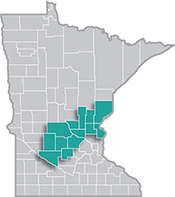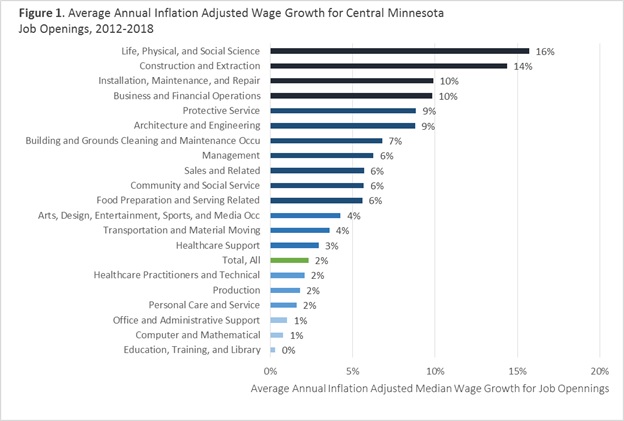 Central Minnesota is a manufacturing stronghold, with several global manufacturing firms operating there.
Central Minnesota is a manufacturing stronghold, with several global manufacturing firms operating there.
The region is especially well known for its expertise in food processing, printing, furniture manufacturing, appliances, machinery and heavy equipment manufacturing.
View our latest blogs on CareerForce. Want the freshest data delivered by email? Subscribe to our regional newsletters.
7/16/2019 11:00:00 AM
Luke Greiner
Last month’s Central Local Look covered the relationship between monetary policy and the labor market, specifically how demand for workers can lead to wage growth that outpaces inflation. This blogpost will dive into more detail, possibly exposing what occupations are most difficult for businesses to fill.
Since 2012, when Minnesota’s employment level topped its pre-recession peak, Central Minnesota saw an average growth in inflation-adjusted median wage offers of 2 percent. Life, physical and social science occupations have seen the fastest inflation-adjusted growth, averaging a 16 percent rise in median wage offers for job openings. Occupations in this category include chemists, economists, physicists, and scientists.
Other occupational groups that have enjoyed fast growing wage offers for job openings include construction; installation, maintenance, and repair; and business and financial operations. Six occupational groups lagged the overall inflation-adjusted wage growth for openings, including health care practitioners and technical occupations, production, and personal care and service occupations. Education, training and library occupations experienced no inflation-adjusted wage offer growth for job openings (Figure 1).

Wage growth statistics for job openings can be pushed and pulled by various dynamics. For instance, if an occupational group has very low turnover, openings might occur mainly for entry-level jobs that pay less to start, keeping wage offers lower. In contrast, an occupation with acute demand for workers but a lack of qualified candidates might have to raise wages significantly to draw in a supply of workers. Data is full of nuances, so it’s important to think about why the wage growth among the occupational groups might be so varied.
You can explore historical trends for job vacancies using a new interactive visualization.
Contact Luke Greiner at 320-308-5378.